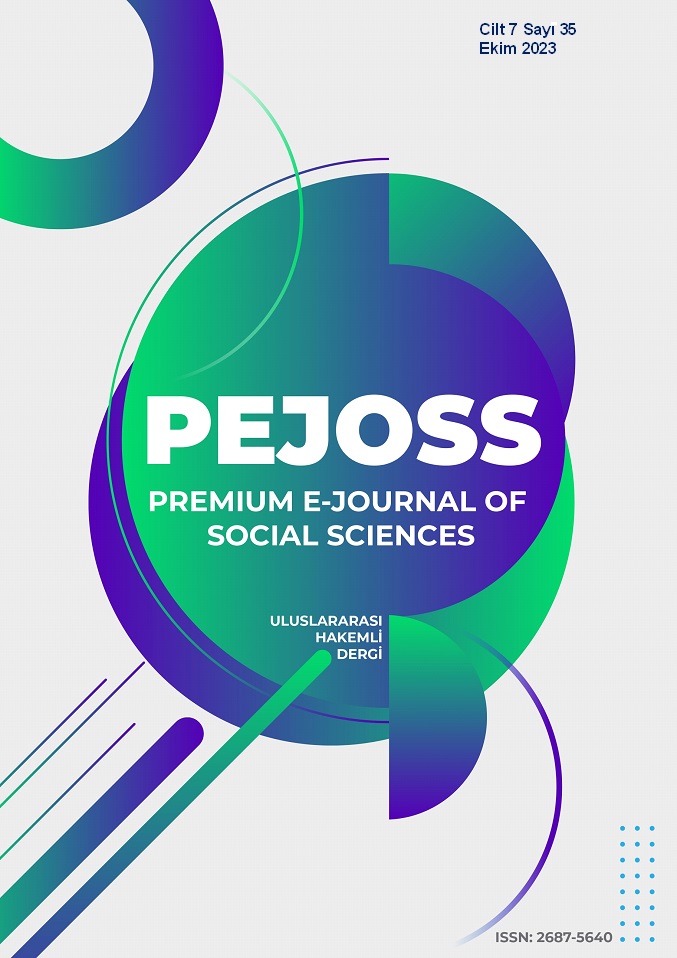A Current Problem Cluster of Bioethics: Artificial Intelligence
DOI:
https://doi.org/10.5281/zenodo.10030046Keywords:
Bioethics, ethical dilemma, moral machine, traffic ethics, artificial intelligenceAbstract
Artificial intelligence, a software or computer program with a learning mechanism is used in many fields. The concept of artificial intelligence was first introduced by Prof. John McCarthy at the Dartmouth Conference held in 1956. Today, artificial intelligence is a very popular topic used in many areas of life. Artificial intelligence, sometimes unconsciously, is used in many areas such as cars, the automotive industry online shopping and online appointment systems, phones, social media, online search engines, navigation, etc. The increasingly widespread use of artificial intelligence has brought about legal and ethical problems and ethical dilemmas. For example, who will be responsible if unmanned vehicles collide in mid-air and cause damage? Another example is the problems caused by the actions of robot workers and the compensation for the damage resulting from these actions. What an unmanned vehicle would do in case of a situation developing suddenly while driving in traffic will be the programmed decision of artificial intelligence. Will the personal views of the person(s) doing the programming not be effective in these decisions? Can we expect that artificial intelligence can be programmed to make ethical decisions? Is it possible for this decision to be always ethically, correct? This article discussed a new bioethics problems cluster as artificial intelligence, which use artificial intelligence in traffic.
Downloads
References
Ak, T. & Çobanoğlu, N. (2015). İnsansız Savaş Araçları ve Etik. Ankara Üniversitesi Sosyal Bilimler Enstitüsü Dergisi, 6 (2), 13-25.
Agrawal A., Gans J. & Goldfarb, A. (2019). Geleceği Gören Makineler. Yapay Zeka Ekonomisine Giriş. (Mustafa Ürgen Çev.) Babil kitap.
Akman, T. (2003). Sibernetik. Kaknüs Yayınları.
Arslan, K. (2017). Eğitimde Yapay Zeka ve Uygulamaları. Batı Anadolu Eğitim Bilimleri Dergisi, 11(1), 71-88.
Asimov, I. 2016. Ben Robot. (6. Baskı.). (Ekin Odabaş Çev.), İthaki Yayınları.
Awad E., Dsouza S., Kim R., Schulz J., Henrich J., Shariff A., Bonnefon J.-F. & Rahwan I. (2018). The Moral Machine Experiment. Nature, 563, 59–64.
Avcıoğlu, G. Ş. (2017). Emek, Sibernetik ve Toplum. Selçuk Üniversitesi Edebiyat Fakültesi Dergisi, (37), 515-518. https://doi.org/10.21497/sefad.328649
Berreby, D. (2020) Robotlar Aramızda. National Geographic, Eylül, 233, 22-43.
Birer G. C. (2018a). Yapay Zeka. Bilim ve Teknik, Ocak, 51, 602, 26-36.
Birer G. C. (2018b). Yapay Zeka Uygulamaları. Bilim ve Teknik, Ocak, 51, 602, 36-43.
Bonny, S.P. F., Gardner, G.E., Pethick, D.W. & Hocquette J.-F., (2015). What is artificial meat and what does it mean for the future of the meat industry? Journal of Integrative Agriculture, 14 (2), 255-263, https://doi.org/10.1016/S2095-3119(14)60888-1
Bozkurt Yüksel, A. E. (2017). Robot Hukuku. TAAD, Ocak, 7, 29, 85-112.
Çobanoğlu, N. (2009). Kuramsal ve Uygulamalı Tıp Etiği. Eflatun Yayınevi.
Leonhard, G. (2018). Teknolojiye Karşı İnsanlık, İnsan ile Makinenin Yaklaşım Çatışması. (Cihan Akkartal, İlker Akkartal Çev.). Siyah X Yayınevi.
Luetge, C. (2017). The German Ethics Code for automated and connected driving. Philos. Technol. 30, 547-558.
Mahmutoğlu, A., Çimen A. ve Çobanoğlu, N. (2012). İnsan Odaklı Trafik Yönetimi Bağlamında Trafik Etiğinden Trafik Ahlakına Geçiş. Sosyal ve Ekonomik Araştırmalar Dergisi, 24, 427-461.
moralmachine (t.y.). Makine Etiğine İnsanın Bakış Açısı. moralmachine.mit.edu
NTV Haber. (2016). Sakarya'da sokak köpekleri otomobili parçaladı, https://www.ntv.com.tr/video/ turkiye/sakaryada-sokak-kopekleri-otomobili-parcaladi,m9GVZgN3Q0WBeY1e3Ui8Hw.
Petyurdu. (2019). Türkiye’de Beslenmesi Yasaklanmış Köpek Irkları Hangileridir? Beslemenin Güncel Para Cezası Ne Kadar? Hukuki Zemin Nedir? https://www.petyurdu.org/2019/09/27/turkiyede-beslenmesi-yasaklanmis-kopek-irklari-hangileridir-beslemenin-guncel-para-cezasi-ne-kadar-hukuki-zemin-nedir/
Reclamm, P. (2008). Ethik in Medizin, Ein Studienbuch, 3., aktualisierte Auflage.
Reese B. (2018). Yapay Zeka Çağı, Dördüncü Çağ: Akıllı Robotlar, Bilinçli Bilgisayar ve İnsanlığın Geleceği. (Mihriban Doğan Çev.). Say Yayınları.
Rene, Y. C., Coyner, A. S., Kalpathy-Cramer, J., Chiang, M. F., & Campbell, J. P. (2020). Introduction to Machine Learning, Neural Networks, and Deep Learning. Trans. Vis. Sci. Tech., 9 (2), 14. https://doi.org/10.1167/tvst.9.2.14
Rouhiainen, L. (2020). Yapay Zeka Geleceğimizle İlgili Bugün Bilmemiz Gereken 101 Şey. (Toprak Deniz Odabaşı Çev.). Pegasus Yayıncılık.
Strange A. (2014). We are 'summoning the demon' with AI: technologist Elon Musk, https://www.smh.com.au/technology/we-are-summoning-the-demon-with-ai-technologist-elon-musk-20141027-11c8ql.html
Songar, A. (1991) Sibernetik. (10. Baskı). Yeni Asya Yayınları.
Walton, D. (2015). The Basic Slippery Slope Argument. Informal Logic, 35 (3), 273-311.
Downloads
Published
How to Cite
Issue
Section
License
Copyright (c) 2023 Premium e-Journal of Social Science (PEJOSS)

This work is licensed under a Creative Commons Attribution 4.0 International License.


